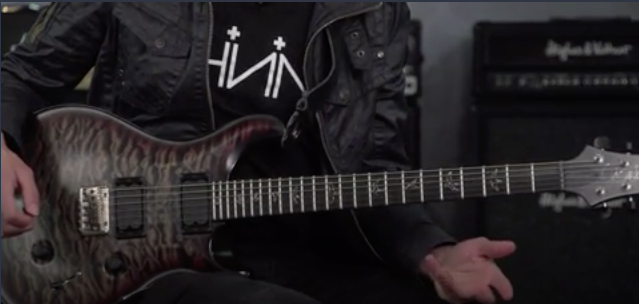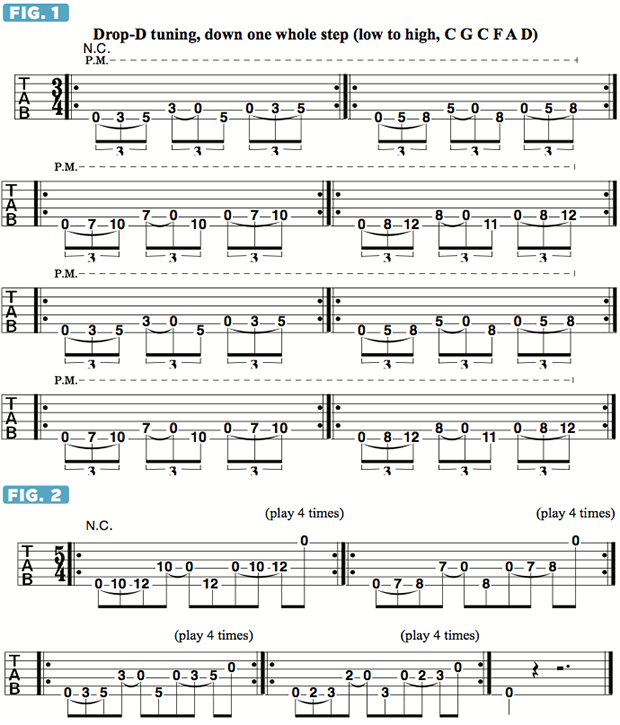Creative Legato Exercises with Odd Meters
Learn how to execute “spider crawl” riffs.

In the music of Periphery, we use a lot of what I like to refer to as “spider crawl” riffs—twisted single-note phrases that are generally used as transitions between song sections.
Many of the typical phrases we come up with are rather acrobatic and involve a lot of finger slides, hammer-ons and pull-offs, along with a lot of shifting up and down the neck in order to articulate the riffs properly.
It can be challenging to get riffs such as these to sound smooth and even, so I have a set of exercises that I came up with and practice so that I can work specifically on my legato technique. Also, as is usually the case, my guitar is tuned to drop-D down one whole step (low to high, C G C F A D) for all the examples included herein, with the music written as if the guitar were tuned to drop-D at concert pitch and the understanding that everything sounds a whole step lower than written.
FIGURE 1 is played in 3/4 meter and is executed in a steady stream of eighth-note triplets, meaning three evenly spaced notes are sounded within each beat. Throughout the figure, all notes are played on the bottom two strings, with some light palm muting used to keep the open strings from ringing. The majority of the notes in each bar are sounded with either hammer-ons or pull-offs.
In bar 1, I begin by picking the open sixth string, followed by a double hammer-on up to the third and fifth frets with my index and ring fingers. On beat two, I pick the note on the fifth string’s third fret, also fretted with my index finger, then pull-off to that open string, which is then followed by picking the note at the fifth fret on the sixth string. The last three notes are sounded with a double hammer-on from the open fifth string to the third and fifth frets, again using my index and ring fingers, as I had done on the sixth string on beat one.
The remainder of the exercise is comprised of gradually moving this phrasing idea further up the fretboard: in bar 2, the pattern is moved up to fifth position (the index finger is stationed at the fifth fret), and the two-fret span between notes used for the opening two bars is expanded to three frets. The same is true for bar 3, as the shape is moved up to seventh position, and then the span between the notes is widened to two whole steps in bar 4, after which the entire pattern repeats.
Another odd meter that we like to employ in Periphery is 5/4, and FIGURE 2 offers an example of a legato exercise performed in this meter. The fingering pattern is almost identical to that of FIGURE 1, except the notes on the sixth string alternate with notes on the fourth string instead of the fifth, which introduces a string skip.
All the latest guitar news, interviews, lessons, reviews, deals and more, direct to your inbox!
Another twist is that the phrase is played in a rhythm of even, or “straight,” eighth notes, which serves to give it a more random feel. And each bar ends with either the open first or third string, adding an angular contour and unique harmonic twist to the phrase.
When performing an exercise like this, the biggest challenge is achieving absolutely even articulation of every note, so strive for an overall smooth execution and sound throughout.

